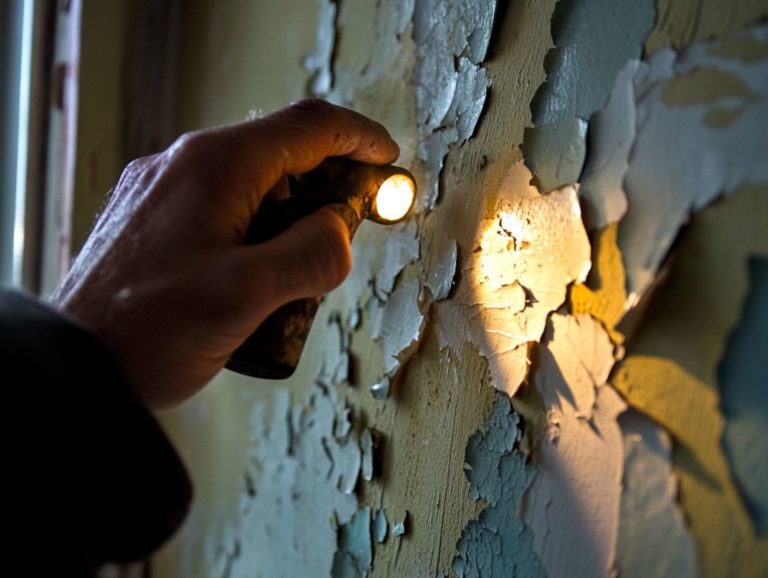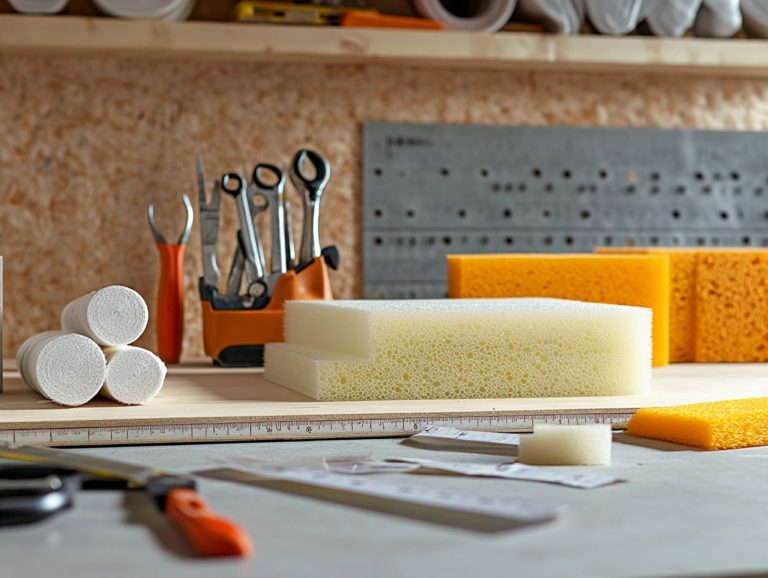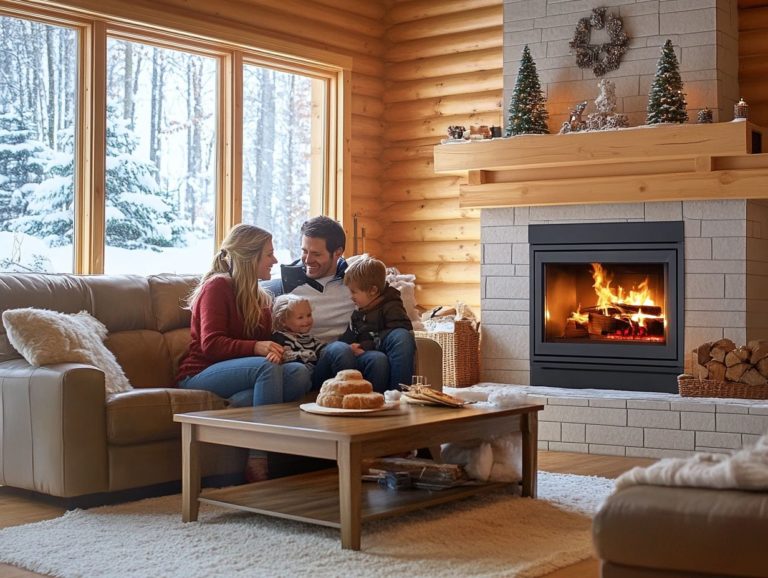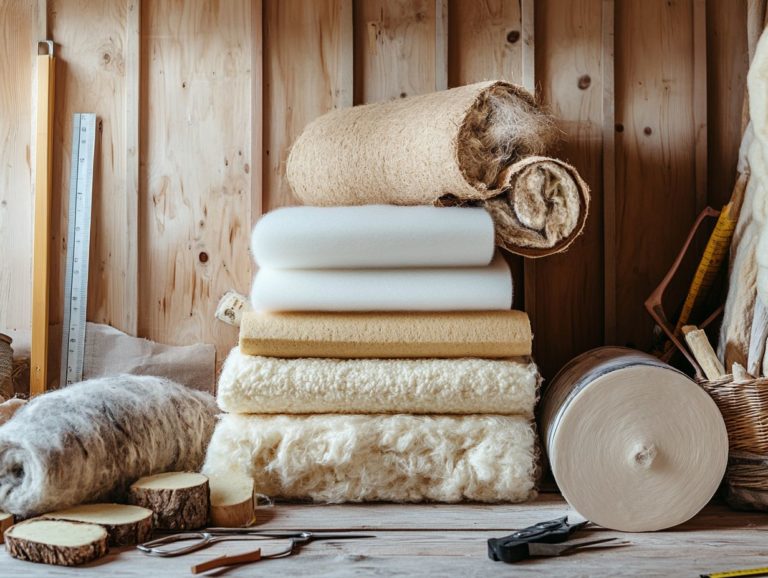Top Insulation Products for 2024
As you navigate the landscape of home construction and renovation, the significance of effective insulation cannot be overstated. The right insulation not only enhances energy efficiency and comfort but also plays a vital role in sustainability. Get ready to discover the top insulation options that will keep your home cozy and energy-efficient!
This article delves into the top insulation products for 2024, offering a range of options from traditional choices like fiberglass to innovative materials like aerogel and recycled denim. Whether you re a homeowner, builder, or simply curious about insulation, you ll uncover solutions designed to meet modern needs and preferences.
Contents
- Key Takeaways:
- 1. Fiberglass Insulation
- 2. Cellulose Insulation
- 3. Mineral Wool Insulation
- 4. Spray Foam Insulation
- 5. Reflective Insulation
- 6. Rigid Foam Insulation
- 7. Natural Fiber Insulation
- 8. Radiant Barrier Insulation
- 9. Cotton Insulation
- 10. Polyurethane Foam Insulation
- 11. Polystyrene Insulation
- 12. Aerogel Insulation
- 13. Sheep’s Wool Insulation
- 14. Recycled Denim Insulation
- 15. Vermiculite Insulation
- Frequently Asked Questions
- What are the top insulation products for 2024?
- What makes spray foam insulation a top product for 2024?
- Why is cellulose insulation considered a top product for 2024?
- What Sets Fiberglass Insulation Apart in 2024?
- Why Choose Mineral Wool Insulation in 2024?
- What Makes Rigid Foam Insulation Essential in 2024?
Key Takeaways:
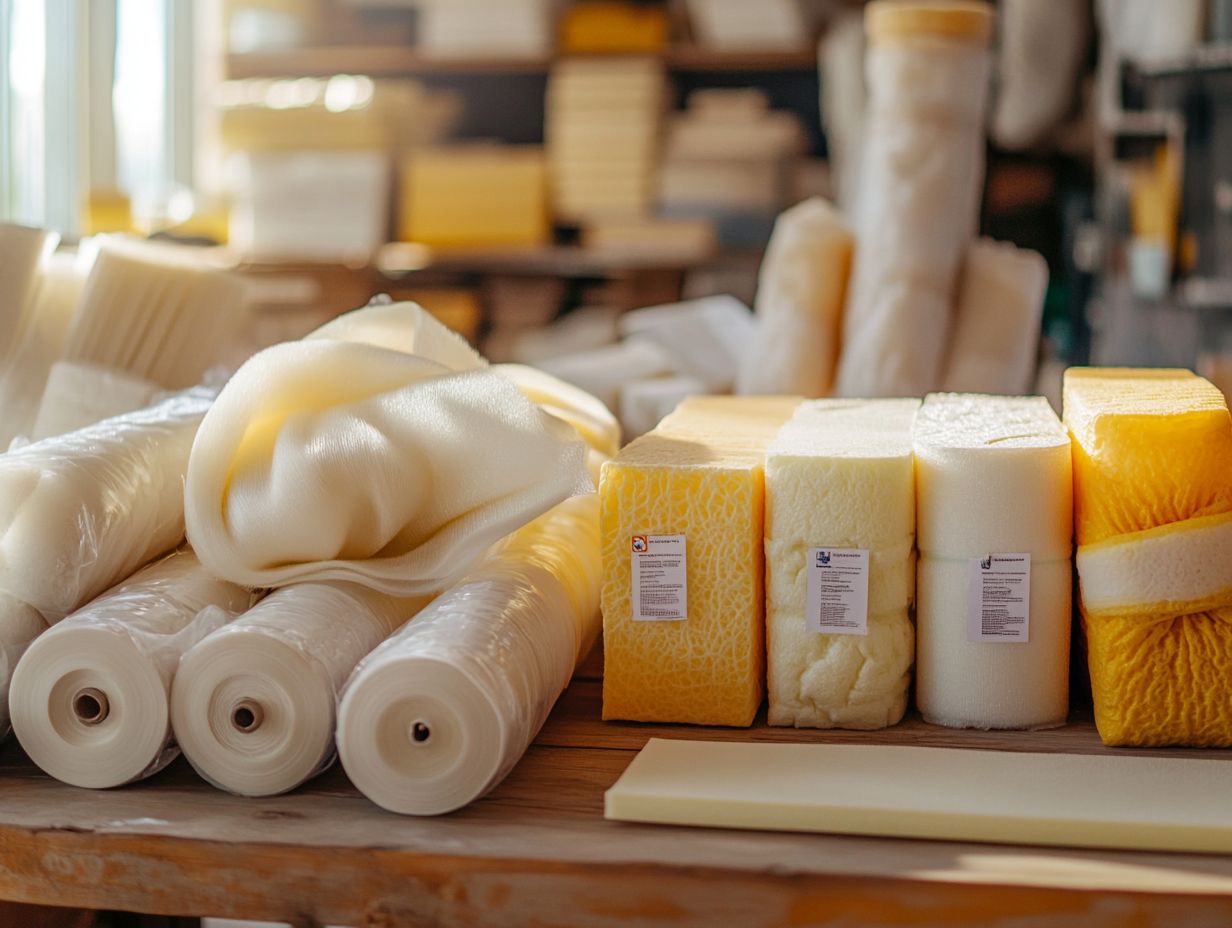
Fiberglass, cellulose, and mineral wool insulation are your best bets this year! Spray foam insulation and reflective insulation offer superior energy efficiency and can be great choices for those looking for long-term savings. For eco-friendly options, consider natural fiber insulation, sheep’s wool insulation, and recycled denim insulation, which are all sustainable and offer good insulation properties. Don t miss out on the savings and comfort these options provide!
1. Fiberglass Insulation
Fiberglass insulation stands out as a premier choice for homeowners due to its remarkable thermal performance and budget-friendly nature. It significantly cuts down energy bills and is a dependable solution for enhancing home comfort, especially in regions like Alabama and Mississippi.
The R-value measures insulation’s ability to resist heat flow. A higher R-value means better insulation performance. With a high R-value, fiberglass insulation excels at managing heat flow, keeping your spaces warm in the winter and refreshingly cool in the summer.
Compared to other materials like cellulose or spray foam, fiberglass often comes at a fraction of the cost while delivering similar thermal advantages. You can also choose eco-friendly fiberglass options made from recycled materials, allowing you to make sustainable choices without sacrificing comfort.
To unlock its full potential, proper installation is essential. Make sure it fits tightly without any gaps, which will boost its insulation capabilities and lead to substantial savings on your energy bills.
2. Cellulose Insulation
Cellulose insulation emerges as an exceptional eco-friendly choice, crafted from recycled paper. It delivers superior thermal resistance and energy efficiency while significantly reducing your heating and cooling costs.
The production process involves shredding the paper and treating it with non-toxic fire retardant chemicals, ensuring that the final product meets safety standards while enhancing durability. When compared to traditional insulation materials like fiberglass, cellulose excels in sound absorption and is resistant to mold and pests, making it a wise investment for homeowners.
To achieve optimal efficiency, proper installation is crucial. Ensuring that the insulation fits snugly within wall cavities is essential to prevent air leaks and maximize thermal performance. Using specialized equipment, such as a blower, guarantees uniform coverage, further amplifying the benefits that cellulose insulation offers.
3. Mineral Wool Insulation
Mineral wool insulation stands out for its exceptional moisture resistance and fire retardant properties, significantly enhancing energy efficiency across various climates.
This insulation type also delivers remarkable soundproofing capabilities, effectively dampening noise transmission between rooms and minimizing disturbances from outside sources. When compared to alternatives like fiberglass, mineral wool often shines with superior thermal performance and resilience, ensuring longevity and reducing the need for frequent replacements.
To truly harness its potential, proper installation is essential. Ensuring tight seams and full coverage will help prevent heat loss and significantly boost acoustic performance. And don t forget to use protective gear during installation to keep yourself safe.
4. Spray Foam Insulation
Spray foam insulation is a great way to seal air leaks and improve the R-value, which measures insulation effectiveness, of your home. However, professional installation is often necessary to unlock its full potential.
There are two main types of spray foam insulation: open-cell and closed-cell. Each has unique advantages for different applications.
- Open-cell spray foam is lighter and more flexible, making it ideal for interior walls.
- Closed-cell foam serves as a strong barrier against moisture, making it perfect for basements and crawl spaces.
By choosing spray foam insulation, you can reduce energy bills significantly, as it creates an airtight seal that prevents conditioned air from escaping. Proper installation is crucial; poor application may lead to air pockets and reduced effectiveness.
When selecting a contractor, verify their credentials, read customer reviews, and gather multiple quotes to make an informed decision.
5. Reflective Insulation
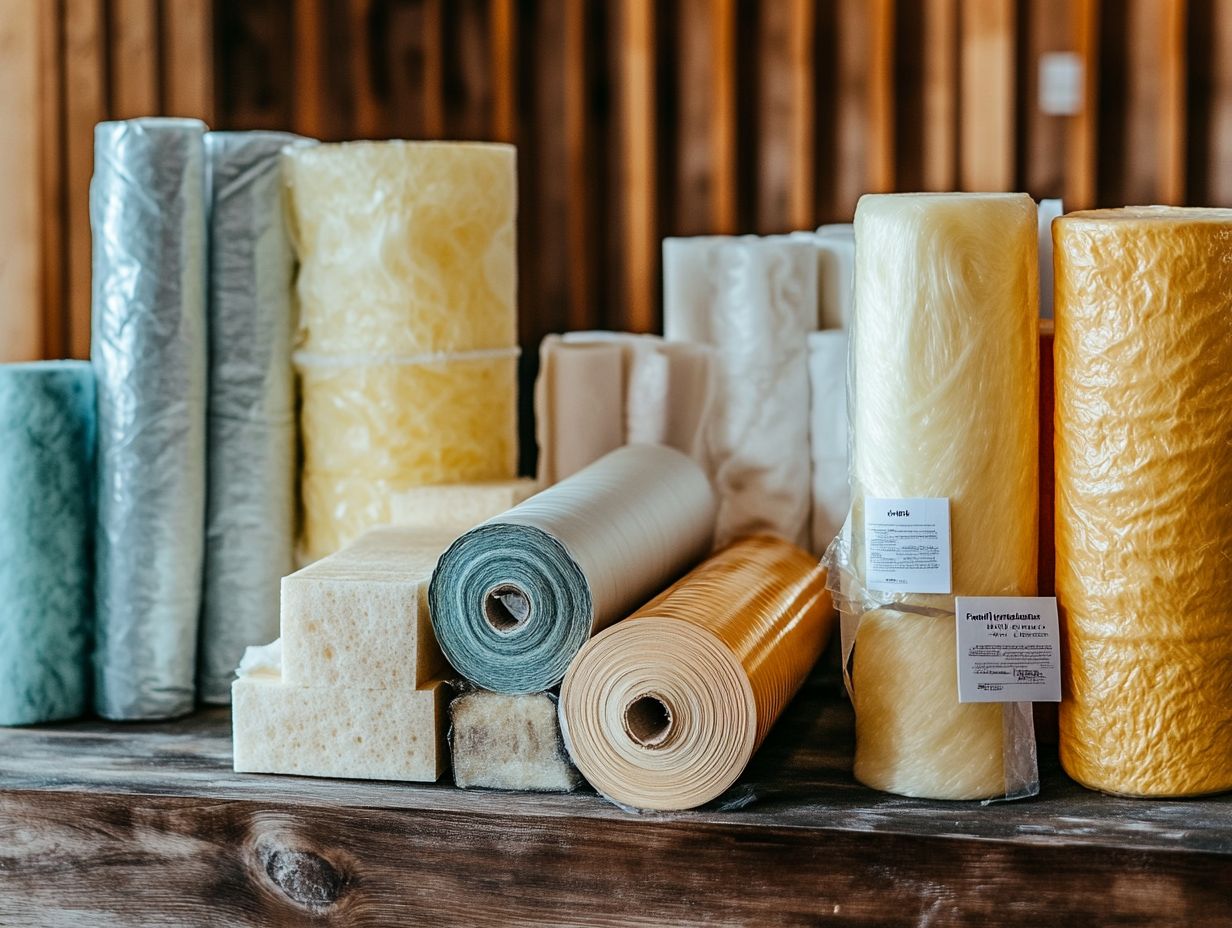
Reflective insulation, often in the form of radiant barriers, plays a vital role in reducing cooling costs by reflecting radiant heat away from your living spaces. This greatly improves energy efficiency in warm climates.
This innovative insulation method works best in attics, where heat gathers and creates discomfort. By using reflective materials, you can lower energy consumption during hot summer months.
Installing this insulation involves layering reflective sheets under roofs or on walls for maximum effectiveness. Unlike traditional insulation methods that focus on slowing heat flow, reflective insulation minimizes heat gain entirely.
This makes it a fantastic choice for optimizing energy use in various environments, especially in high-temperature regions.
6. Rigid Foam Insulation
Rigid foam insulation is an excellent solution for your thermal performance needs, making it a preferred option for walls and roofs. Its high R-value per inch and easy installation are key advantages.
This insulation comes in several types: expanded polystyrene (EPS), extruded polystyrene (XPS), and polyisocyanurate, each meeting specific requirements.
- EPS is often chosen for roofing and foundation systems due to its cost-effectiveness and moisture resistance.
- XPS excels in situations requiring compression strength, such as beneath concrete slabs.
- If you need a higher insulating value, polyisocyanurate is typically used for industrial roof systems.
When installed correctly, these materials can significantly cut down your heating and cooling costs, making them essential for energy efficiency.
To maximize performance and durability, ensure tightly sealed seams and proper moisture barriers during installation.
7. Natural Fiber Insulation
Natural fiber insulation is an appealing eco-friendly option that offers great thermal resistance, made from renewable resources like hemp, flax, or sheep’s wool. This choice promotes sustainability in home building and improves your living environment.
This type of insulation helps regulate indoor temperatures while enhancing air quality since it lacks harmful chemicals often found in synthetic alternatives.
By using these natural materials, you can improve sound absorption, creating quieter and more comfortable spaces.
For installation, options include batts or loose fill, depending on your structure’s needs. Ensuring a proper fit and seal during installation is crucial.
This maximizes insulation performance and minimizes energy loss, benefiting your household and the environment.
8. Radiant Barrier Insulation
Radiant barrier insulation is designed to reflect heat away from your living spaces. This makes it a highly effective strategy for reducing cooling costs and boosting energy efficiency, especially in warmer climates.
Unlike traditional insulation materials that resist heat transfer, radiant barriers reflect radiant heat. This feature is particularly advantageous in attics and roofs, where sunlight tends to warm surfaces.
By incorporating radiant barriers, you can significantly lower indoor temperatures during sweltering summer months. For optimal performance, it s crucial to install radiant barriers with an air gap facing the attic insulation. This setup maximizes heat reflection.
In areas where both heating and cooling are necessary, combining radiant barriers with other types of insulation creates a balanced thermal management system. This enhances overall comfort and efficiency in your home.
9. Cotton Insulation
Cotton insulation, made from recycled cotton textiles, is an eco-friendly choice that delivers outstanding thermal performance and soundproofing qualities. It’s perfect for your sustainable home upgrades!
This innovative material drastically cuts energy costs while keeping your home cozy and quiet. It also reduces noise pollution, fostering a tranquil living space.
When compared to traditional insulation materials like fiberglass or foam, cotton insulation stands out for its non-toxic properties. This ensures a safer environment for both installers and residents.
The installation process is typically straightforward and requires only standard tools and safety gear. However, it s essential to wear a mask to avoid inhaling any loose fibers.
Regular maintenance involves a simple check for signs of moisture or pests. This helps ensure that your insulation remains efficient over time.
10. Polyurethane Foam Insulation
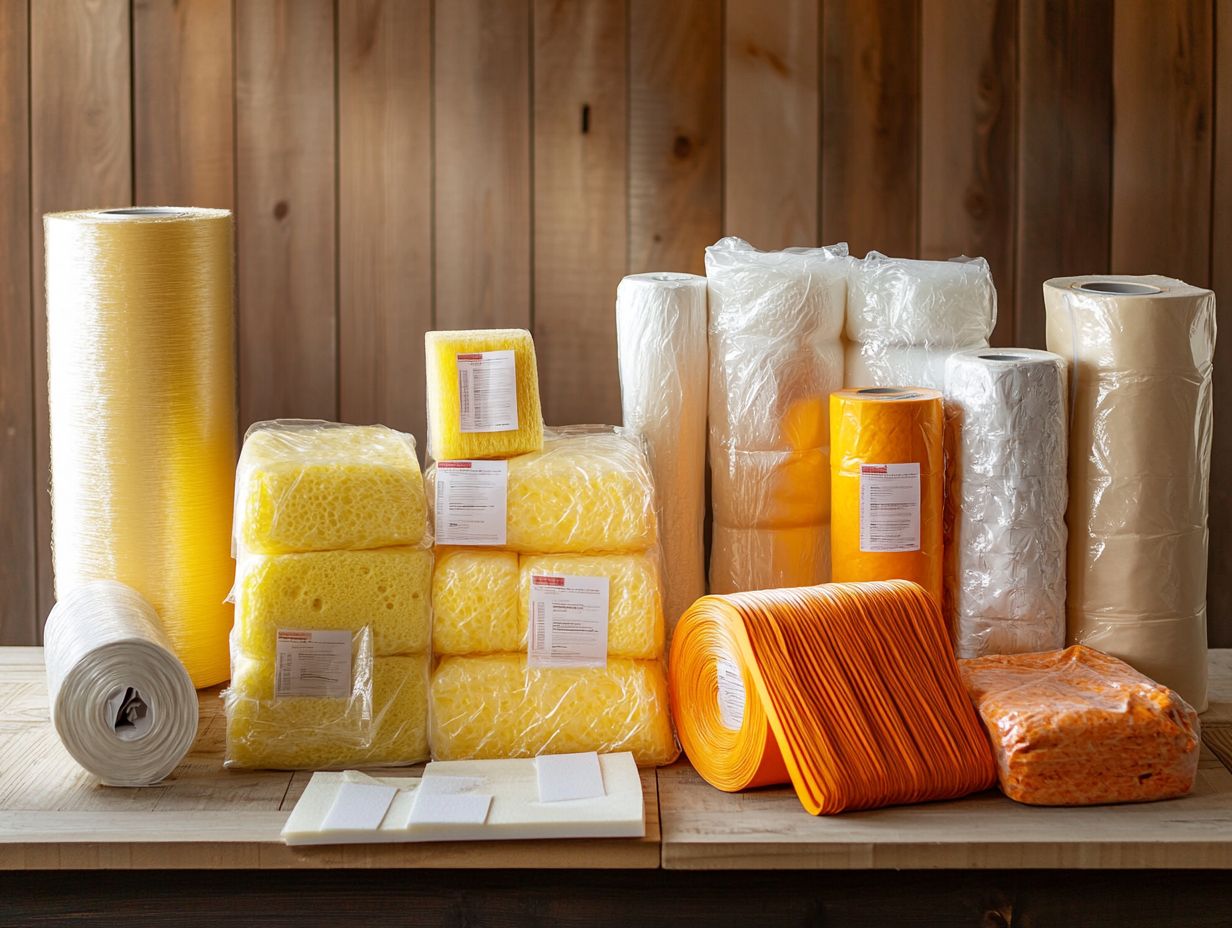
Polyurethane foam insulation stands out for its impressive effectiveness in insulating. It effectively seals air leaks, making it an excellent choice for energy efficiency in both residential and commercial buildings. Often, this requires professional installation to ensure optimal results.
This adaptable material comes in various forms, including open-cell and closed-cell foam, each providing distinct advantages. Open-cell foam is lightweight and excels at soundproofing. In contrast, closed-cell foam offers a higher R-value (a measurement of insulation effectiveness) and acts as a barrier to moisture, making it particularly suitable for moisture-prone areas.
Homeowners and builders appreciate that these insulations can significantly lower heating and cooling costs over time. When selecting an installer, it s essential to seek experienced professionals with verified certifications. Their expertise ensures that the foam is applied correctly, maximizing its performance and longevity.
11. Polystyrene Insulation
Polystyrene insulation, available in both expanded and extruded forms, is highly effective and celebrated for its thermal performance and moisture resistance. This enhances overall energy efficiency.
The distinction between these two forms lies in their manufacturing processes and structural properties. Expanded polystyrene (EPS) is made by expanding polystyrene beads, resulting in a lightweight material with excellent insulation qualities. This makes it ideal for applications such as walls, roofs, and floors.
In contrast, extruded polystyrene (XPS) is produced through a continuous process that yields a denser and more rigid board. This is particularly well-suited for moisture-prone areas like foundations and basements.
Regarding installation, it s essential to ensure proper sealing and fitting to create a tight barrier. This careful approach maximizes the inherent benefits of the materials, guaranteeing optimal energy efficiency and comfort in any building.
12. Aerogel Insulation
Aerogel insulation is a revolutionary material known for its ability to keep heat in or out and its energy efficiency. This makes it an ideal choice for modern homes, where effective insulation is crucial while minimizing space and weight.
Its unique structure, mainly composed of air, allows aerogel to drastically reduce heat transfer compared to traditional materials like fiberglass or foam. The allure of this extraordinary substance extends beyond residential applications; it is also increasingly utilized in industrial settings, aerospace endeavors, and even art installations due to its lightweight nature and exceptional thermal resistance.
When comparing aerogel to traditional options, consider its superior insulating properties and initial cost. While it may require a higher upfront investment, the long-term energy savings and reduced environmental footprint often make it a wise choice for those eager to enhance efficiency in their spaces.
13. Sheep’s Wool Insulation
Sheep’s wool insulation is a sustainable choice that provides excellent thermal resistance and moisture control. It’s an eco-friendly option suitable for various climates, keeping your home warm in winter and cool in summer by regulating temperature fluctuations.
The fibers naturally absorb and release moisture, helping to prevent mold growth and promote healthier indoor air quality. However, consider the potential challenges, such as its higher cost compared to synthetic alternatives and susceptibility to pests if not treated properly.
For optimal performance, proper installation is key. Implementing vapor barriers and ensuring an airtight seal can significantly enhance efficiency. This makes sheep’s wool insulation a smart choice for environmentally conscious builders and homeowners seeking more comfort in their spaces.
14. Recycled Denim Insulation
Recycled denim insulation, made from repurposed denim fabric, offers a unique eco-friendly option that excels in keeping heat in or out and soundproofing for sustainable building projects.
The process begins with sourcing post-consumer denim, which is expertly shredded and transformed into insulation batts or rolls. This not only diverts textile waste from landfills but also gives the insulation impressive durability.
When it comes to installation, you’ll find it easy to cut and fit into walls, attics, and floors, just like traditional insulation materials. What sets recycled denim apart is its lack of harmful chemicals, significantly reducing indoor pollutants. Compared to conventional insulation, this innovative solution often excels in acoustics, making it a great choice for those who prioritize both environmental responsibility and comfort.
15. Vermiculite Insulation
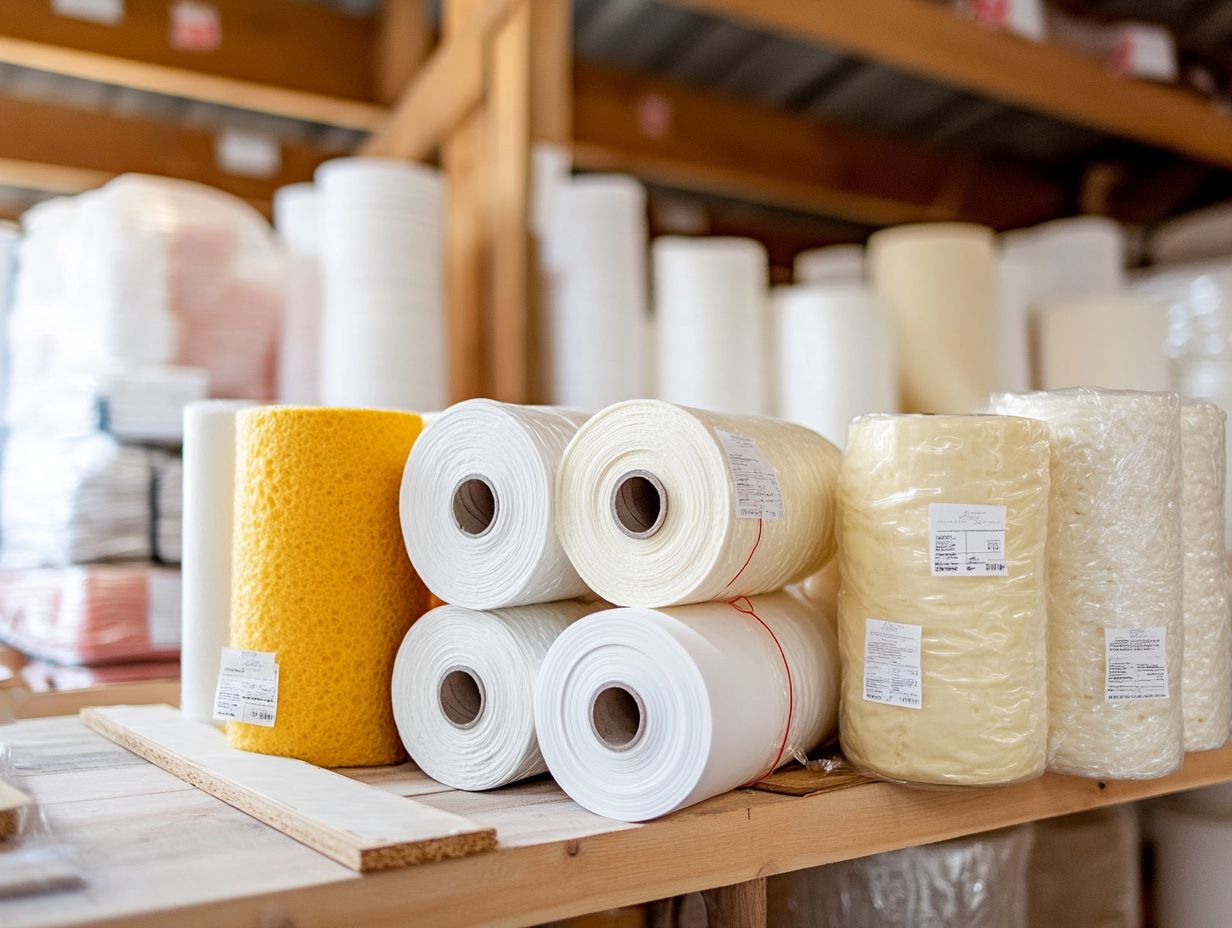
Vermiculite insulation is a lightweight, eco-friendly material that excels in moisture resistance and thermal performance, making it an excellent choice to boost energy efficiency in your home.
Its unique properties allow it to expand when heated, creating air pockets that effectively trap heat while providing outstanding soundproofing. This versatility means you can use it for insulating attics and walls or filling gaps around mechanical systems.
Before installation, ensure the surface is clean and dry, and apply the correct thickness for optimal effectiveness. Pairing vermiculite with other insulating materials can further enhance overall performance, making it a favored choice for both new constructions and retrofitting projects.
In this video, you ll learn about the benefits and applications of various insulation materials, helping you make an informed choice for your projects.
Frequently Asked Questions
Here are some common questions about insulation products for 2024.
What are the top insulation products for 2024?
The top insulation products for 2024 include spray foam insulation, cellulose insulation, fiberglass insulation, mineral wool insulation, and rigid foam insulation.
What makes spray foam insulation a top product for 2024?
Spray foam insulation is a top product for 2024 because it has a high R-value, is highly efficient, and can be used in both new construction and retrofit projects. (R-value is a measure of insulation’s ability to resist heat flow.)
Why is cellulose insulation considered a top product for 2024?
Cellulose insulation is considered a top product for 2024 due to its eco-friendly and sustainable nature, high R-value, and ability to reduce energy costs.
What Sets Fiberglass Insulation Apart in 2024?
Fiberglass insulation is a must-have choice for 2024.
It s affordable, easy to install, and versatile for homes and businesses.
Why Choose Mineral Wool Insulation in 2024?
Mineral wool insulation stands out this year.
It s fire-resistant, moisture-resistant, and offers great soundproofing.
What Makes Rigid Foam Insulation Essential in 2024?
Rigid foam insulation is essential for 2024.
It creates a continuous air barrier, has a high resistance to heat flow, and resists mold and pests.

